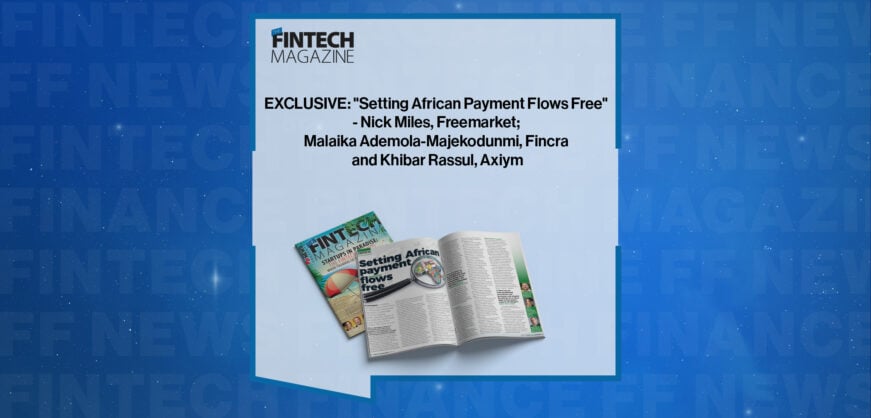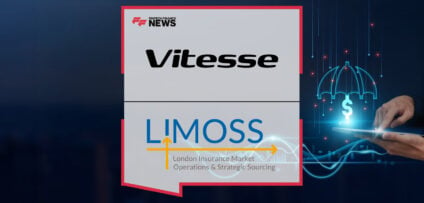Breaking News

EXCLUSIVE: “Treasury Lines of Sight” – Bruno Mellado, BNP Paribas in ‘The Fintech Magazine’
Bruno Mellado, BNP’s Global Head of Payments and Receivables, explains how the bank is giving corporate treasury a clear view of data
A recent survey for the 2023/4 edition of the Journeys To Treasury report, published by BNP Paribas, together with PwC, SAP and the European Association of Corporate Treasurers (EACT), found visibility on cash flows to be the top priority for CTOs.
Indeed, drilling down through the numbers, more than 43 per cent of European treasurers saw transparency on cash flow forecasting as their primary focus for the next 12 to 24 months, in order to inform decisions when managing investments, exposures, hedging, and raising debt. Real-time reporting, real-time liquidity and real-time payments collection were all top areas of interest. Working capital optimisation and treasury technology infrastructure were also seen as priorities.
This resonates with treasurers’ primary concerns across the globe, as also seen in the Key Treasury Challenges Survey in Asia Pacific. However, centralisation and standardisation are likely to be further topics of significant interest over the next 12 to 24 months, as BNP Paribas notes in the Journeys To Treasury report.
Factor AI and ML into the treasury mix and that could bring the treasury function to entirely new levels, it suggests. In short, collecting and processing the vast volumes of data flowing through the function in a secure, comparable, and centralised way is essential for emerging tools to deliver optimal outcomes.
“When it comes to the technological innovations that European treasurers are prioritising, data analytics leads the way, as senior management increases the pressure on treasury to make use of the vast swathes of data flowing through the function,” the report’s authors observe.
Against this backdrop, BNP Paribas, with its bird’s eye view of global financial flows and as custodian of individual corporate client data, believes it has a role and an opportunity – even a duty – to help in that regard.
And to do that effectively, it had to consider its own approach to data management.
“The exciting part is that we now have more data to know not only what is going right, but also what is going wrong and how we should intervene to make processes more efficient for our corporate clients,” says Bruno Mellado, global head of payments and receivables at BNP Paribas. But one of the key challenges for the bank was figuring out who should have access to that data and how, he says. “One of the key principles I’ve been involved in from the beginning is the need-to-know principle. The bank has a lot of access controls and mandates, where the question is, ‘who needs to see the data?’. So if I am a commercial person, I’m only able to see what I need to see, for the purpose that I have to use it. That requires a lot of rules-based approaches, a lot of systems that say, ‘this is masked; this you can see’.
“For example, in suspected fraud cases, you have to be able to drill down – but only the person who has permissions to drill down – to see why this is a fraud case or even if it is truly a fraud case. Then, when you call the client to say, ‘hey, are you sure this isn’t a fraud?’ they are appreciative that you’ve looked at their data.“Knowledge is the key to all of this,” continues Mellado.
“At some point we realised that everything that the bank is doing is an actual event. Hence, the more granular you’re able to capture your data, the more you can do with it”
“So when we talk about payments, and the data behind a payment, you need knowledgeable people to know what a payment in Brazil means, compared one in Europe, or China, to understand currency differences and regulations, as well. Say there is a new regulation on VAT introduced somewhere and you need to pull up all transactions where VAT is applied. We need to understand the request, work on the data with enough security and protection, and provide it to regulators. Or a client might say, ‘how much VAT am I paying, overall, worldwide?‘ and you have to work out what the local product in Brazil looks like, compared to the one in Canada and in Belgium, and produce a single XML-based report, that says, ‘this is how many payments, how many channels, how many users”.”
The power that this information holds is transformational, says Mellado.
“I’ll give you just a very basic example. If I pay you instantly, but you are not able to know who paid you, for how much, which invoice, it doesn’t matter if the payment arrived with you in a few seconds, you still cannot do anything about it. But if the payment arrives instantly, and you have the data to know which invoice and vendor it is, you can say ‘he’s already paid, he has no outstanding invoices, I will give him more products‘. That provides a lot of benefits, and for economies, it makes a huge difference.
“At some point, we realised that everything that the bank is doing is an actual event,” continues Mellado. “Hence, the more granular you’re able to capture your data, the more you can do with it. So, we built a technology that allows us to centralise that data in an event-based context, which can then be accessed to know what happened. The hardest part is identifying what you need to know. But if you have the tools, and have centralised those tools, it’s easier to get those answers.”
Large corporates are complex beasts.
A global big pharma or automotive manufacturer, for example, will tend to have a number of legal entities, with elements of their businesses distributed around the world. And there had been an assumption – indeed Mellado himself assumed – that these sophisticated organisations’ treasury departments ‘probably knew it all already’. But it turned out, they had the same data challenges as the bank – and didn’t have the skills or resources to fix the problem.
“So, showing them how many users there are, how many payments have been made in foreign currency, how many service requests have been raised and remain outstanding from a specific entity – these are insights that corporates can use to better manage their large and distributed organisations,” says Mellado.
EUROPEAN FOCUS
BNP Paribas is a global leader in the area of corporate and institutional banking, but it’s also driving the transaction banking agenda in Europe – indeed, its transaction banking revenues in EMEA were up nearly 60 per cent last year. It is a founding member of the bank-led, 16-member European Payments Initiative (EPI) whose aim is to create a unified, independent, competitive and open pan-European payments system by leveraging the instant account-to-account payments infrastructure available in Europe to improve efficiency and remove intermediaries in the payment flow.
The plan is to enable next-generation payments for consumers and merchants in Europe across all types of retail transactions. Initially, it will support person-to-person (P2P) and person-to-professional (P2Pro) payments, followed by online and mobile shopping payments and then point-of-sale.
In September 2023, EPI confirmed ‘wero’ as the commercial name for its digital wallet solution, having acquired iDEAL and Payconiq in the Netherlands and Belgium. The long-term objective is to position wero as the preferred digital wallet in Europe and rollout is expected from mid-2024 onwards in France, Belgium and Germany, followed by the Netherlands and other countries in 2025.
Elsewhere, BNP Paribas and Startup Studio 321, recently launched Panto, offering marketplaces a dedicated payment management solution. This vertical integration of payment chains by banks is an example of the standardisation and centralisation of data referred to in the Journeys To Treasury report. And BNP Paribas is actively engaged in delivering it.
As Mellado himself recently noted in an interview elsewhere: “A lack of standardisation creates additional layers of complexity for corporates trying to centralise APIs. My vision is to develop more of those standard APIs that allow for specific purposes, such as the return of funds, for example.”
Currently, the bank is working with non-Web 3 technologies to give its corporate and SME clients insight into the data that accompanies all these transactions – individually and in aggregate – to inform businesses’ processes and give them a strategic overview. But, in a recent partnership with fintech Sis ID, aimed at collectively reducing risk exposure, a unique repository shared by more than 15,000 companies was created to certify the data of third parties via a private blockchain.
BNP Paribas also acted as co-lead (along with Goldman Sachs) in arranging a £77.7million Series B funding round recently for Fnality International that’s also using distributed ledger technology and could have an even bigger impact on treasury management. Watch this space.
This article was published in The Fintech Magazine Issue 31, Page 28-29
People In This Post
Companies In This Post
- Kea Rolls Out Local Payouts in 85+ Currencies Read more
- Friendly Fraud Expected to Increase by 25% Between Thanksgiving and Cyber Monday, Warns ACI Worldwide Read more
- Tide to Launch Connected Insurance for SMBs Read more
- Market Backs 3-Year LIMOSS/Vitesse FCP Contract to Improve Treasury Management and Claims Payments in the Lloyd’s Market Read more
- GNOMI Launches the Only ‘Finance Mode’ with Real-Time Global Earnings Calls and Generative Market Intelligence Read more

















